We've been expecting Canon to release its longest super-telephoto RF lenses for a while now, and a fresh leak suggests that pro wildlife photographers won't be waiting much longer.
A new leaked image, picked up by Photo Rumors (below), has seemingly given the Canon RF 800mm f/5.6 L IS USM and RF 1200mm f/8 L IS USM their first public appearances. The image also contains a date, 24/2, which suggests that both lenses could be fully launched on February 24.
The two lenses will offer the longest focal lengths in the RF system, alongside the smaller RF 600mm f/11 and 800mm f/11 lenses from last year and the more high-end RF 600mm f/4L IS USM. Both of the new lenses are likely to be based on their EF predecessors for Canon's DSLRs, which are now discontinued.
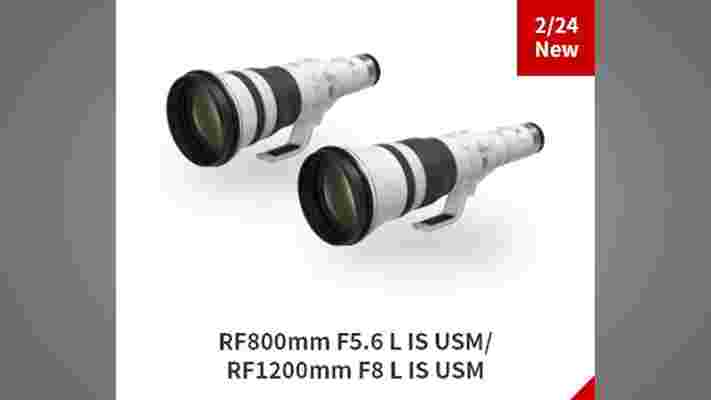
This means the lenses are, as the leaked image suggests, going to be very weighty and expensive beasts for pros. The old EF 800mm f/5.6 L IS USM, for example, weighed in at 4.5kg and cost $12,200 / £13,549.
The extremely niche RF 1200mm f/8 L IS USM, meanwhile, could be even pricier, though it should be smaller and considerably more affordable than the f/5.6 1200mm version that Canon made for the EF mount. That lens weighed in at 16.5kg and, due to its rarity, commanded six-figure price tags.
Canon's natural successors to those lenses should be a little more sensible, and it looks like we'll find out for sure in the next couple of days – possibly during the CP+ 2022 show in Japan.
Analysis: A high-end battle for the mirrorless crown
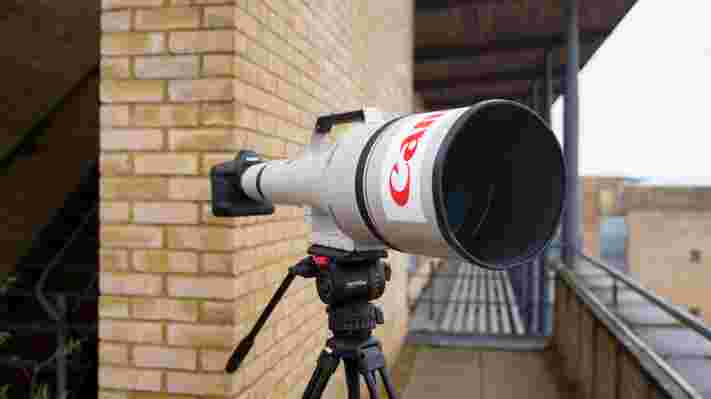
Canon's new super-telephoto lenses may not be high on the average photographer's shopping list, but they are an interesting barometer of the camera giant's battle with its traditional rival, Nikon.
Nikon recently announced the Nikon Z 400mm f/2.8 TC VR S lens for wildlife snappers, which costs a cool $13,999 / £13,499 / AU$22,999. And it's expected to follow that up soon with 600mm and 800mm super-telephoto primes.
It looks like Canon will beat it to the punch with its RF 800mm f/5.6 L IS USM, though, and also hit the 1200mm mark in this battle of focal length one-upmanship.
For most people, a 600mm lens with a 2x teleconverter would make more practical sense, but these kinds of extreme lenses aren't just about practicality. They're also a technological flex to pro photographers, and amateurs further down, of the mirrorless lens designs that are now possible, and of the relative health of each company's mirrorless systems.
Still, at least we'll get to see some spectacular wildlife photography on the way, like Nikon recently displayed for its Z 400mm f/2.8 TC VR S launch .
PSVR 2 vs PSVR: is it worth upgrading to Sony’s next-gen virtual reality headset?
The PSVR 2, the next VR headset from Sony, is expected to launch in late 2022. But how will this new headset compare to the Japanese tech giant’s first foray into virtual reality, the PlayStation VR headset?
The PlayStation VR2 – as we now know it’s officially called – will be a dramatic improvement over the original PSVR’s specs. Sony says it will provide a more immersive experience, which will allow players to escape into game worlds like never before. Considering the original PSVR already felt immersive – especially for those trying VR for the first time – this is certainly exciting.
But if you already own the PSVR , which was released in October 2016, how is Sony’s next-gen virtual reality headset likely to stack up against its predecessor? We don’t have all of the details about the PSVR 2 yet, but below we’ll compare them based on everything we’ve found out so far. That way you can decide whether PSVR 2 will be worth the upgrade when it’s released later this year.
PSVR 2 vs PSVR: price and release date
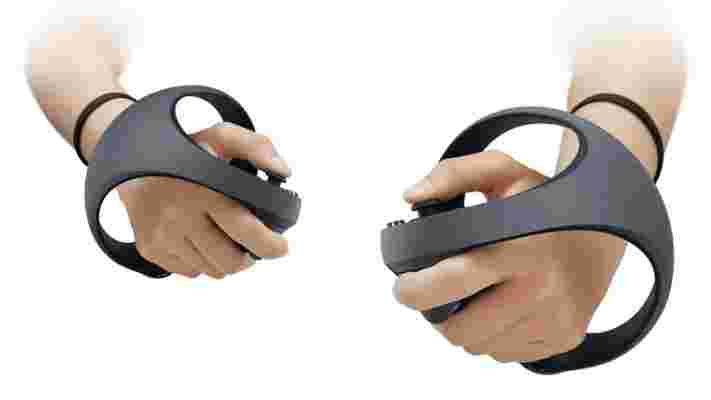
Sony hasn’t revealed the price of the PSVR 2 yet, but we can refer to the original PlayStation VR’s launch for a vague idea of where the next-gen headset might fall when it comes to price.
The original price for a full PSVR bundle was $499 (£399, about AU$650); however, that’s considerably more than consumers may want to pay, especially if they have already shelled out on a PS5 which is $499 (£449 / AU$795).
The price of the PSVR has dropped considerably since its release, and the starter bundle now retails for $200 / £259 / AU$420. This is slightly cheaper than the price of the hugely popular Oculus Quest 2 which typically sells for £299 / $299 / AU$479, but that’s not a surprise considering the age of Sony’s headset.
With the PSVR 2 set to boast impressive specs, we’re not expecting to see Sony’s new headset drop below the initial $499 price tag from 2016, and expect it may fall into a higher bracket than the previous model.
PSVR 2 vs PSVR: design and features
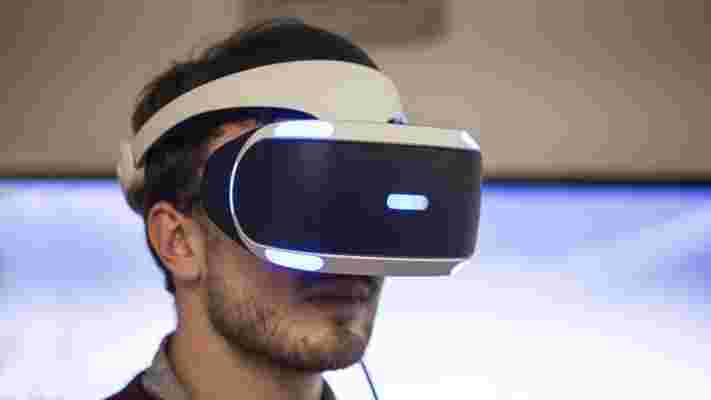
After many months of waiting, Sony finally revealed what the PSVR 2 headset will look like - and it's very similar to the PSVR's original design. It promises to be lighter, slimmer and includes a ventilation port to keep you cool when gaming. We still don't have the exact dimensions of the headset just yet, but Sony has said it's a touch lighter than the PSVR, which was approximately 600 grams.
The PSVR 2 comes with two new controllers, the PlayStation VR2 Sense, which includes adaptive trigger and haptic feedback support. It also uses a 4K HDR OLED panel, with a resolution of 2000 x 2040 per eye. The refresh rate is 90Hz - 120Hz , with a field of view of 110 degrees, as well as foveated rendering .
The new sensory features of PSVR 2, as Sony dubs it, combine eye tracking, headset feedback, 3D Audio , and the PSVR 2 Sense controller to create a deeper feeling of immersion. A built-in motor in the headset will add an additional tactile element, that can replicate your character’s pulse during tense moments, or the rush of objects passing by your head. There's also a lens adjustment dial and the option to adjust the scope area so it sits closer or further away from your face.
Sony’s new virtual reality headset will thankfully reduce the number of wires, with PSVR 2 only requiring a single cable, but sadly it isn’t wireless like the Oculus Quest 2. It’s also unclear whether the PSVR 2 will include a breaker box like the original, but we're hoping it connects directly to the PS5 this time around.
PSVR 2 vs PSVR: specs
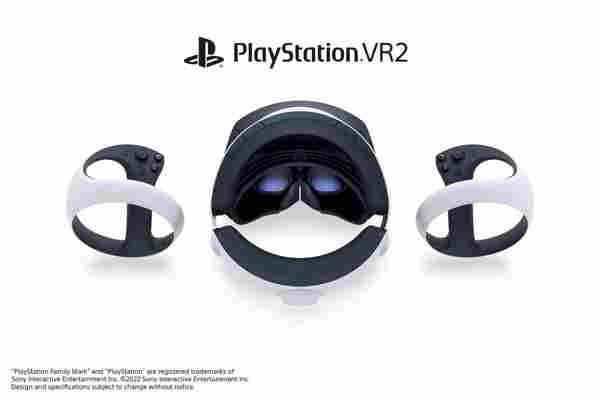
PSVR 2, as you might expect, is far more capable than the original headset, and is also being powered by the PS5. Sony shared the full specs of the PlayStation VR2 at CES 2022 , which you can find below.
| PSVR 2 specs | |
|---|---|
| Display Method | OLED |
| Panel resolution | 2000 x 2040 per eye |
| Panel refresh rate | 90Hz, 120Hz |
| Lens separation | Adjustable |
| Field of View | Approx. 110 degrees |
| Sensors | Motion Sensor: Six-axis motion sensing system (three-axis gyroscope, three-axis accelerometer)) |
| Cameras | 4 cameras for headset and controller tracking, IR camera for eye tracking per eye |
| Feedback | Vibration on headset |
| Communication with PS5 | USB Type-C |
| Audio | Input: Built-in microphone, Output: Stereo headphone jack |
Compare the PSVR 2 specs to the original PSVR, and it’s clear that Sony’s new headset is a generational leap over Sony’s first effort. The panel resolution is, in particular, drastically lower than PSVR 2’s, which thankfully is greatly improved. You can see the PSVR’s full specs below.
| PSVR specs | |
|---|---|
| Display Method | OLED |
| Panel resolution | 960x 1080 per eye |
| Panel refresh rate | 90Hz, 120Hz |
| Lens separation | Adjustable |
| Field of View | Approx. 100 degrees |
| Sensors | Motion Sensor: Six-axis motion sensing system (three-axis gyroscope, three-axis accelerometer)) |
| Cameras | N/A |
| Feedback | N/A |
| Communication with PS5 | Via an adapter |
| Audio | Input: Built-in microphone, Output: Stereo headphone jack |
| VR headset dimensions | Approx. 187×185×277 mm (width × height × length, excludes largest projection, headband at the shortest). Approx. 600g (excluding cable). |
| Processor unit | Approx. 150 x 39 x 114mm (width × height × length, excludes largest projection). Approx. 300g. |
PSVR 2 vs PSVR: games
Sony has already revealed the first game for PSVR 2, Horizon Call of the Mountain, which sees Guerilla Games’ popular Horizon series get its own VR spin-off. A number of games are in development for Sony’s new headset, too, and we’d expect to see many of the most popular VR games, like Beat Saber , get upgraded versions that take advantage of the PlayStation VR2 and PS5’s more powerful hardware.
It’s worth noting that the older PSVR headset is backward compatible with the PS5 if you request a free adaptor from Sony . If you’re not bothered about having the latest specs, then, it could be worth picking up the last-gen version on the cheap to see whether virtual reality, in general, is something you enjoy and sample previous releases.
We don’t know whether the PSVR 2 will let you play older PSVR games on it, but we sincerely hope that it is indeed backward capability. It’s almost certain you won’t be able to play PSVR 2 specific games on the PlayStation VR, though.
PSVR 2 vs PSVR: verdict
It’s clear that Sony’s PSVR 2 is a big step up from the original device, then, but whether or not it will capture a large enough audience is another thing, especially as PlayStation 5 consoles are still incredibly hard to buy. PSVR wasn’t exactly a massively popular add-on, selling around 6 million units in total, though it was clearly successful enough to continue with its journey into virtual reality.
The PSVR 2 will certainly appeal to those who are already on board with VR, and with an impressive specs list and some clever features, Sony’s second attempt to make virtual reality more mainstream could pay off.
Tag Heuer's latest smartwatch is smart, sporty, and seriously expensive
Tag Heuer has released a new edition of its premium Connected smartwatch, with some major hardware upgrades to help justify its price tag. The Tag Heuer Connected Calibre E4 boasts a new processor, Bluetooth 5.0, and improved battery life (the company says the watch should last all day on a single charge, with several hours of workout tracking).
There's a good range of fitness tools on offer, the most impressive being guided seven-minute workouts, with animations to follow on the AMOLED display.
The Connected Calibre E4 comes with a leather or rubber band and a brushed steel or titanium case. As Yahoo Finance notes, it's also available in two sizes - a first for Tag Heuer. In addition to the standard 45mm model, there's also a 40mm version for smaller wrists.
Future-proof
All of this comes at a steep price, starting at $1,800 / £1,550 (about AU$2,500) for the steel 42mm model, and $2,050 / £1,700 (about AU$2,900) for the 45mm version. Opting for the full titanium model will boost the price to $2,550 (about £1,900 / AU$3,600), making it one of the most expensive Wear OS watches around.
That's no surprise; ever since the first Tag Heuer Connected watch made its debut in 2015, the series has been all about adding a touch of luxury to the sometime utilitarian world of smartwatches.
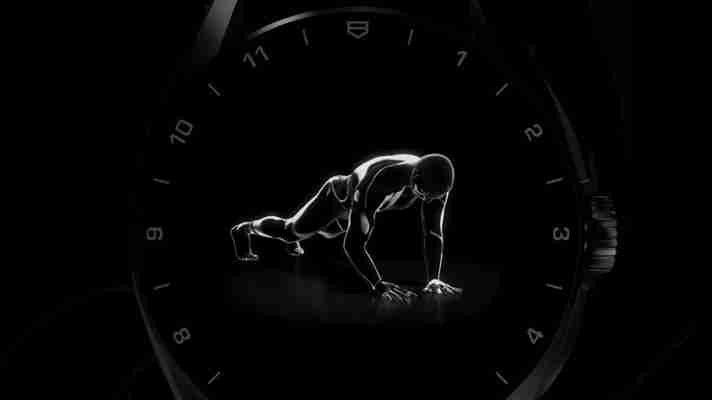
Thankfully, there's some future-proofing here. The Connected Calibre E4 is sold with Wear OS 2 installed, but will be upgraded to Wear OS 3 when Google's new watch operating system eventually lands.
Analysis: good watches come in small packages
There are lots of reasons to choose a bigger smartwatch: more data can be displayed on the screen at watch, it can hold a larger battery and/or solar cell, controls are less fiddly to operate, and you can get more creative with the interface when there's extra space available.
However, a watch measuring 45mm in diameter (or even more) isn't for everyone, and can look overwhelming on smaller wrists, so it's good to see companies tackling the challenge of fitting components into a more compact case.
Apple Watches are available in two sizes, as are most Garmin devices, including the rugged Garmin Instinct 2 that launched earlier this week. Now Tag Heuer has joined in too, proving that luxury smartwatches can be modestly sized.
That's good news for anyone who might have settled for a basic fitness tracker even though a fully fledged smartwatch or running watch may suit their needs better.